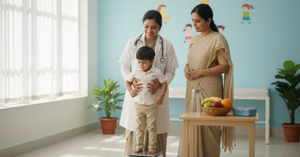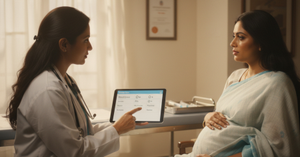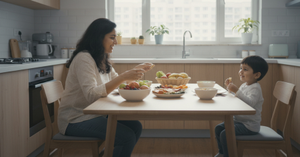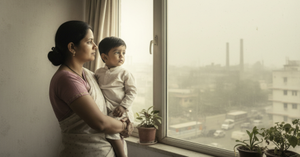Getting that phone call from the school nurse about head lice is every parent's nightmare. Your heart sinks, your mind races to all the washing and cleaning ahead, and you're probably already scratching your own head just thinking about it. But here's the thing: head lice are incredibly common, and dealing with them doesn't have to turn your world upside down.
The Reality Check: What You're Actually Dealing With
Before diving into panic mode, let's get the facts straight. Head lice are tiny bugs that love hanging out in hair – any type of hair, whether it's curly, straight, freshly dyed, or completely natural. They're especially fond of kids between 3 and 11 years old, and they tend to show up more often in girls than boys (probably because girls tend to have more head-to-head contact during play).
Here's what might surprise you: lice have absolutely nothing to do with how clean your child is. These little hitchhikers don't care if your kid just had a bath or hasn't washed their hair in days. They also can't jump or fly – they're basically the world's most annoying crawlers who need direct head-to-head contact to move from one person to another.
Step One: Don't Go Overboard on House Cleaning
Take a deep breath. You don't need to fumigate your entire house or throw away half your belongings. Lice can't survive more than about 24 hours without feeding from a human scalp, and their eggs won't hatch at room temperature. So that massive cleaning spree you're planning? You can dial it back quite a bit.
Focus on the basics: wash pillowcases, hats, and hair brushes that have been in contact with your child's head in the past couple of days. Hot water (at least 130°F) and a hot dryer cycle for 15 minutes will do the trick. For items you can't wash, just seal them in plastic bags for two weeks – the lice will be long gone by then.
The Wet-Combing Method: Old School but Effective
This traditional approach has been around forever because it actually works. The British Medical Journal backs this up, noting that wet-combing makes lice more visible and helps distinguish them from regular old dandruff.
Here's how to do it: spray some conditioner on wet hair, grab a fine-toothed comb, and get ready to spend some quality time going through every strand of hair. Fair warning – this method requires patience and probably some entertainment for your child. Think movies, audiobooks, or their favorite playlist.
The key is being thorough. Separate the hair into small sections, work under good lighting, and rinse that comb frequently under hot running water. Plan to do this every day for a week, then check nightly for the next two weeks to make sure you've won the battle.
Natural Remedies That Actually Work
If you prefer going the natural route, you've got some solid options. The "smothering" technique involves coating hair with olive or almond oil. Some experts think it's actually the combing that does most of the work, with the oil just stunning the lice and making them easier to catch.
Essential oils have shown promise too, but here's the important part: always dilute them with a carrier oil first, and test a small amount on your child's skin to check for allergic reactions. Tea tree oil, lavender, neem, and eucalyptus oils have all shown effectiveness. Mix about 15-20 drops with 2 ounces of olive oil, apply to the scalp, and leave overnight before combing and shampooing out.
What NOT to Do (This Part's Important)
Don't use extra medication, thinking it'll work faster – that's dangerous. Don't mix different treatments together. And definitely don't repeat the same treatment more than two or three times, as this can build resistance.
Also, avoid using conditioner during treatment (it creates a barrier that stops medication from working properly), and never use lindane shampoo as a first choice for kids – it's only recommended when other treatments have failed because it can be toxic to the nervous system.
When Over-the-Counter Treatments Make Sense
Sometimes, you need to bring in the big guns, and that's perfectly fine. Over-the-counter treatments like permethrin (Nix) can be very effective when used correctly. The key phrase here is "when used correctly" – many parents don't see results because they don't follow the directions exactly.
These treatments typically don't kill the eggs (nits), so you'll likely need a second application about 7-9 days later to catch the newly hatched lice before they become adults. If you're still seeing live crawlers after the first proper treatment, the lice might be resistant to that particular ingredient, and it's time to call your pediatrician.
When to Call in the Experts
If over-the-counter treatments aren't working and you're sure your child hasn't been reinfected, don't keep trying the same approach. Some lice populations have developed resistance to common treatments, and your pediatrician or a pediatric dermatologist can prescribe stronger medications.
There are also professional lice treatment centers that use specialized equipment to dehydrate lice and their eggs with controlled hot air – much more effective than trying to accomplish this with a regular hair dryer (which could burn the scalp).
The Long Game: Staying Alert Without Going Crazy
Unfortunately, there's no magic lice repellent that guarantees your child will never get lice again. The best defense is staying alert to excessive head scratching, especially if your child has had lice before (they're more likely to develop itching sooner the second time around).
Remember, itching is actually an allergic reaction to lice saliva, so not every child will start scratching right away. Keep an eye out for the behavior, but don't become the parent who checks their kid's head every single day – that's a recipe for anxiety all around.
Everyday Habits to Prevent Lice
- No Sharing: Teach kids not to share combs, brushes, hats, scarves, headphones, or hair accessories with others.
- Keep Heads Apart: Remind children to avoid head-to-head contact during play, sports, or group activities.
- Personal Gear: In sports or camps, use personal helmets, towels, and headgear instead of sharing with teammates.
- Tie It Back: Long hair is best kept in braids or ponytails, especially during outbreaks. This makes it harder for lice to move from head to head.
- Regular Head Checks: Use a fine-toothed lice comb to check for lice or nits (eggs) regularly, especially if there’s an outbreak at school or camp.
Conclusion
Dealing with head lice is definitely not fun, but it's also not the end of the world. These tiny pests are incredibly common, and with the right approach, you can get rid of them effectively. Whether you choose wet-combing, natural remedies, or over-the-counter treatments, the key is being thorough and patient.
Most importantly, remember that having lice doesn't reflect on your parenting or your child's hygiene. It's just one of those childhood experiences that many families go through. Stay calm, follow the treatment plan consistently, and before you know it, this whole episode will be just another parenting story to share with other parents who've been there, too.








Be the first one to comment on this story.